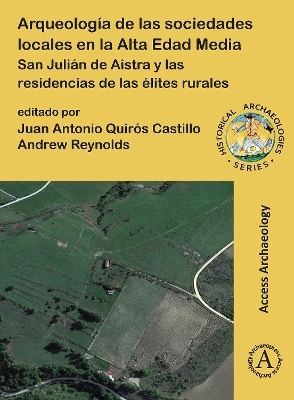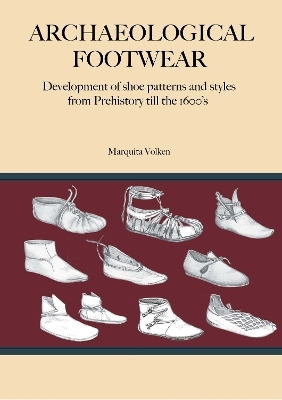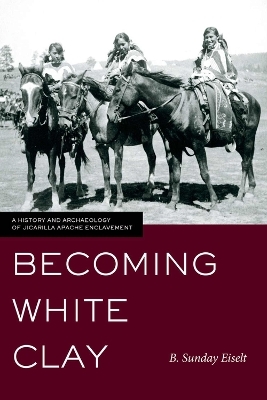
Arqueología de las sociedades locales en la Alta Edad Media
Archaeopress Access Archaeology (Verlag)
978-1-80327-491-1 (ISBN)
Arqueología de las sociedades locales en la Alta Edad Media: San Julián de Aistra y las residencias de las élites rurales presents the main results obtained in the archaeological project of San Julián de Aistra (Zalduondo-Araia, Álava) carried out between 2006 and 2020 by University College London and the University of the Basque Country. The remains of a hermitage dedicated to Santa Julián and Santa Basilisa, built in the 10th century and renovated in the Romanesque period and in the 18th century, are preserved in the deserted village of Aistra, which is documented since the 11th century. Excavation has shown that the site was occupied in prehistoric, Roman and medieval times. While prehistoric and Roman materials have been recovered in secondary contexts, four medieval phases of a domestic, productive, and funerary nature have been defined. One of the most important results of the project has been the discovery of residential spaces of elites who exercised territorial dominion throughout the Early Middle Ages. In the 14th century, the place was depopulated and, since then, the Aistra area has been managed and disputed by the nearby villages of Zalduondo and Araia, which created a community aimed at jointly managing the resources and spaces of Aistra. This community, active between the 14th and 20th centuries, broke up from the 19th century onwards, when individual management of resources became accentuated, and the commons were divided up.
This collective volume brings together a large number of specialized studies and provides an interpretation of the site of Aistra in terms of socio-political practices that define the main characteristics of early medieval local societies in the northwest of the Iberian Peninsula.
Juan Antonio Quirós Castillo is Professor of Archaeology at the University of the Basque Country. His principal interests are focused on landscapes, social archaeology and historical archaeologies. He has directed several projects devoted to the study of early medieval local societies, social complexity and inequality. As a result, he has published several volumes on these topics, including Social Inequality in Early Medieval Europe Local Societies and Beyond (Brepols 2020). Andrew Reynolds is Professor of Medieval Archaeology at the Institute of Archaeology, University College London. His main scientific interests are the archaeological study of early medieval societies in particular of 8th-12th century Britain, as well as the archaeology of architecture. Some of the themes he has been working on include the archaeology of governance, the geography of burials in early medieval English landscapes, and the social, temporal, and physical nature of boundaries in material terms.
Resumen ;
Prefacio – Juan Antonio Quirós Castillo ;
Capítulo 1: Introducción. El proyecto arqueológico de Aistra – Juan Antonio Quirós Castillo ;
Capítulo 2: El lugar de Aistra y el altozano de San Julián. Entre memoria y Arqueología – Juan Antonio Quirós Castillo ;
Capítulo 3: Aspectos geóticos de Aistra (Asparrena y Zalduondo, Araba/Álava) – Luis M. Martínez-Torres ;
Capítulo 4: El carácter del territorio y del paisaje en el que se ubica el despoblado de Aistra: una visión geográfica – María C. Porcal-Gonzalo ;
Capítulo 5: Aistra en el registro escrito: la historia de una comunidad – Ernesto Pastor Díaz de Garayo ;
Capítulo 6: Del trabajo de campo a la secuencia cronológica: Prospecciones, excavaciones, análisis arquitectónico, elaboración e interpretación del registro – Juan Antonio Quirós Castillo ;
Capítulo 7: La secuencia ocupacional del yacimiento de San Julián (Aistra) – Andrew Reynolds; Egoitz Alfaro Suescun; Carlos Tejerizo; Maite I. García-Collado; Juan Antonio Quirós ;
Capítulo 8: La iglesia de San Julián y Santa Basilisa de Aistra. Secuencia constructiva y análisis arqueológico del edificio – Juan Antonio Quirós Castillo ;
Capítulo 9: Registro estratigráfico del despoblado de Aistra – Andrew Reynolds and Juan Antonio Quirós Castillo ;
Capítulo 10: Los espacios funerarios cementeriales medievales en Aistra – Maite I. García-Collado ;
Capítulo 11: Estudio antropológico y paleopatológico de los restos óseos recuperados en la necrópolis altomedieval de Aistra (Zalduondo, Álava) – Amaia Mendizabal Gorostizu-Orkaiztegi ;
Capítulo 12: Arqueología Agraria en el altozano de San Julián de Aistra – Juan Antonio Quirós Castillo ;
Capítulo 13: Artefactos líticos recuperados en el yacimiento de Aistra (Zalduondo, Álava) – Javier Fernández-Eraso; Maite García-Rojas; Antonio Tarriño-Vinagre; Aitor Sánchez-López de Lafuente ;
Capítulo 14: Epigrafía romana de Aistra – Pilar Ciprés ;
Capítulo 15: La cerámica de época romana y tardorromana de Aistra (siglos I-V d.C.) – Alfonso Vigil-Escalera Guirado ;
Capítulo 16: La ceramica medievale (secoli VI-XIII) di San Julián di Aistra (Zalduondo,
Araia, Álava) – Francesca Grassi ;
Capítulo 17: Los hallazgos monetarios en el despoblado medieval de Aistra (Álava) y algunas consideraciones sobre las monedas perforadas – José Ignacio San Vicente González de Aspuru ;
Capítulo 18: El estudio antracológico de la aldea medieval de Aistra – Riccardo Santeramo; Oliver Nelle; Raquel Piqué; Juan Antonio Quirós Castillo ;
Capítulo 19: Estudio zooarqueológico del despoblado medieval de Aistra (Zalduondo,
Álava, País Vasco) – Idoia Grau Sologestoa ;
Capítulo 20: Industria ósea del despoblado medieval de Aistra (Zalduondo, Álava, País Vasco) – Idoia Grau Sologestoa ;
Capítulo 21: Aistra a lo largo de la historia: las sociedades locales y las identidades de las élites en la Alta Edad Media – Juan Antonio Quirós Castillo
| Erscheinungsdatum | 11.07.2023 |
|---|---|
| Reihe/Serie | Historical Archaeologies Series |
| Zusatzinfo | 305 figures, 82 tables (colour throughout) |
| Sprache | spanisch |
| Maße | 203 x 276 mm |
| Gewicht | 1900 g |
| Themenwelt | Geisteswissenschaften ► Archäologie |
| ISBN-10 | 1-80327-491-3 / 1803274913 |
| ISBN-13 | 978-1-80327-491-1 / 9781803274911 |
| Zustand | Neuware |
| Haben Sie eine Frage zum Produkt? |
aus dem Bereich


